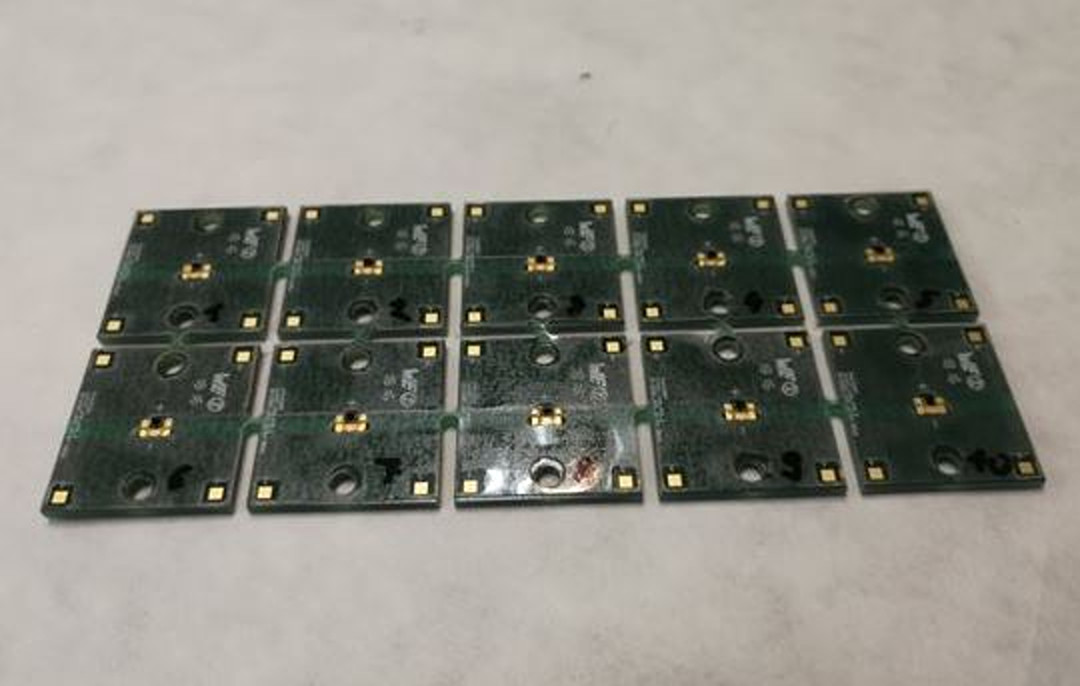Scientists at the Polytechnic University of Madrid have developed a miniaturized concentrating photovoltaic (CPV) cell technology that promises lower production costs and a much cheaper assembly of the CPV modules.
“Micro concentrator photovoltaics (micro-CPV) is an evolution of the conventional CPV technology,” the research's lead author, Norman Jost, told pv magazine. “The main goal of our work was the reduction in size of the solar cell and concentrator lens pair, which allows for an abundance of benefits such as lower transmission losses, better distribution of currents and temperatures, and an overall more compact module resembling sizes of standard silicon modules.”
Jost acknowledged that the CPV technology will not likely achieve the low prices of silicon PV but he also said that CPV has some interesting applications. “The most conventional is the deployment in places where the available space is limited and high power is needed,” he explained. “As these systems are actively tracking the sun they could be considered for some transportation cases such as boats.”
The scientist explained that their work on micro-CPV is a review that collects all that has been done in the field to date. “It could be used as a guide for anyone who would like to start research in this field or any company that is interested in developing a product,” Jost further explained.
In the study “Integrated Micro-Scale Concentrating Photovoltaics: A Scalable Path Toward High-Efficiency, Low-Cost Solar Power,” published in Solar RRL, the researchers explained that the CPV technology has been trapped for years in a chicken-and-egg dilemma, with developers failing to reduce high costs and achieve the promised efficiencies.
“The lack of sufficient commercial deployment has prevented the benefit of cost reduction associated with the learning curve of the technology, whereas the lack of competitiveness compared to conventional PV prevented large-scale market development of the technology,” the group explained.
To partially solve these financial and technical issues, the academics said the CPV technology's fundamentals may be improved by miniaturizing both the CPV cells and the optical components, and by adopting a CPV module assembly scheme that is closer to that of the PV industry.
The review reports on all previous attempts to build micro-CPV cells and also includes the most recent industrial and scientific developments. It presents innovations such as molded glass array lenses, parallel interconnection of solar cells with screen-printing, lenses manufactured by roll-to-plate and roll-to-roll with UV curable resins.
“This review scrutinizes the state of the art of the technology, covering advances on micro solar cell development, solar cell assembly solutions, functional interconnection of the micro solar cells, novel optical designs and manufacturing, the integration of hybrid micro-CPV/silicon PV, and internal tracking within a compact, flat module,” the research team stressed.
According to Jost, downsizing CPV may result in advantages such as a short optical path, better thermal management, lower resistive losses, low weight, and a compact module form factor similar to that of silicon PV. “Additional features include internal tracking and hybrid CPV/silicon-PV.”
This content is protected by copyright and may not be reused. If you want to cooperate with us and would like to reuse some of our content, please contact: editors@pv-magazine.com.




1 comment
By submitting this form you agree to pv magazine using your data for the purposes of publishing your comment.
Your personal data will only be disclosed or otherwise transmitted to third parties for the purposes of spam filtering or if this is necessary for technical maintenance of the website. Any other transfer to third parties will not take place unless this is justified on the basis of applicable data protection regulations or if pv magazine is legally obliged to do so.
You may revoke this consent at any time with effect for the future, in which case your personal data will be deleted immediately. Otherwise, your data will be deleted if pv magazine has processed your request or the purpose of data storage is fulfilled.
Further information on data privacy can be found in our Data Protection Policy.